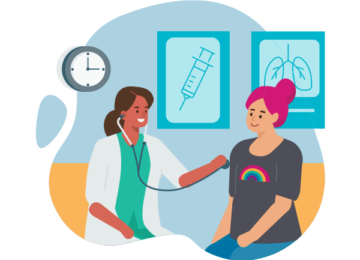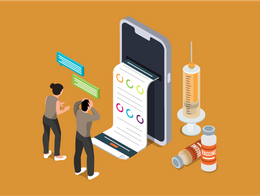Underserved patient populations often face barriers to accessing healthcare, from cultural and language differences to economic and geographic disadvantages, according to the Centers for Disease Control and Prevention. Because of these barriers, patients in underserved communities—which can include rural, elderly and some diverse populations, among others—don’t always get the health content they need from pharma marketers.
However, there are effective, impactful methods for reaching all types of patients. Here are three ways that pharma marketers can be more inclusive in their brand targeting and help support better patient health outcomes.
1. Create and tailor content to key patient demographics
Pharma marketers should partner with vendors that can safely collect and leverage demographic data in a HIPAA-compliant manner to create and serve content that will resonate with specific patient populations. Having access to information such as patients’ race, social determinants of health (SDOH) and language preferences can help match your brand messaging and resources to patients based on their specific needs. When collecting this data at check-in, for example, vendors can adapt to a patient’s primary language by giving them resources such as medication information or doctor discussion guides in their preferred language.
By implementing more inclusive, data-based targeting, you also can empower patients by educating them about health conditions that may disproportionately affect their community or offer resources that address their potential SDOH barriers to care.
2. Put patients—not physicians—at the center
Limiting media coverage to only high-prescribing physicians’ offices is a common, yet restrictive way to build a media plan. While this is a standard method that marketing teams have used to align their field-force efforts with their non-personal media, it often poses limitations in reaching critical patient segments.
Focusing point-of-care advertising exclusively on locations of high-prescribing healthcare provider (HCP) offices bypasses opportunities to reach underserved patients who may be the right fit for your brand message but simply aren’t seeking care from those high-volume prescribers’ offices. Consequently, these are the patients who then miss out on your brand message and support materials that can help get them the care they need.
Instead, to take a more patient-centric approach to media planning, pharma marketers should explore progressive media options available that do not require lists to find clinically relevant patient populations. This will help pharma marketers avoid limiting themselves in their ability to find certain patients who may need more information they can provide.
3. Provide patients with content they can understand based on where they are in their therapeutic journey
To set patients up for therapeutic success, give them content relevant to the current stage of their healthcare journey, whether that means disease awareness or ongoing care and medication adherence. Targeting patients using clinically relevant information such as their medical or medication history will likely make them more receptive to branded content because it will feel more personalized to their needs.
Applying a better-informed approach to patient targeting also helps to identify which patients might be ready to try a treatment and which patients might need more education—a frequent differentiator among patients facing care access barriers. For example, underserved patient populations can sometimes have lower rates of treatment awareness: 54% of Hispanic patients with asthma say they are unaware of biologic treatments for their condition, compared with 45% of patients in the overall population, according to Phreesia survey data gathered from more than 5,500 patients checking in for doctors’ appointments in September 2021.
Finally, focusing marketing efforts solely on where the patient is physically overlooks where they are in their personal care journey—and means missed opportunities to provide them with targeted, crucial support. While two patients in a dermatology office might have the same condition, one might be trying their second type of medication treatment, while the other hasn’t been diagnosed yet. By finding and engaging patients based on their individual therapeutic journey, you can equip them with relevant educational resources that empower them to discuss therapy options with their HCP, choose the right medications and understand the importance of adhering to them—resulting in better health outcomes.
Danielle Lynch is Phreesia’s Vice President of Client Experience, Life Sciences.
Yesenia Bautista is the Director of Point-of-Care Media at Publicis Health Media.
About Phreesia Life Sciences
Phreesia’s targeting capabilities ensure a greater focus on the patient. HCPs in all 50 states use our platform, which is also in more than 70 types of specialty provider offices. Our HIPAA-compliant digital engagement tools capture patient profiles and demographic information that can be used to generate guidance on reach for brands that want to develop and tailor content to highly qualified patient audiences. Phreesia Life Sciences helps brands expand the reach of their creative campaigns, allowing them to be more inclusive in their messaging efforts, thereby diversifying the patient pools with which they engage.
About Publicis Health Media
PHM is the leading health media agency in the U.S. We are designed for—and dedicated to—delivering best-in-class solutions that connect people with meaningful health and wellness solutions every day. Guided by our genuine passion for health and wellness, our work across the entire media ecosystem helps real patients navigate the most pivotal moments of their healthcare journeys.
At PHM, we sit squarely at the intersection of Publicis Health, the largest Healthcare Communications network in the world, and Publicis Media, the number one buyer of media in the U.S. This gives us access to talent, technology and data to help us deliver the market-leading solutions that give our clients true competitive advantage.
Learn how Phreesia can help you reach and activate diverse patient groups by delivering tailored health content that addresses their unique needs.
Try Phreesia for patient engagement
Phreesia can help deliver your message to clinically-qualified patients at critical moments in their healthcare journey


